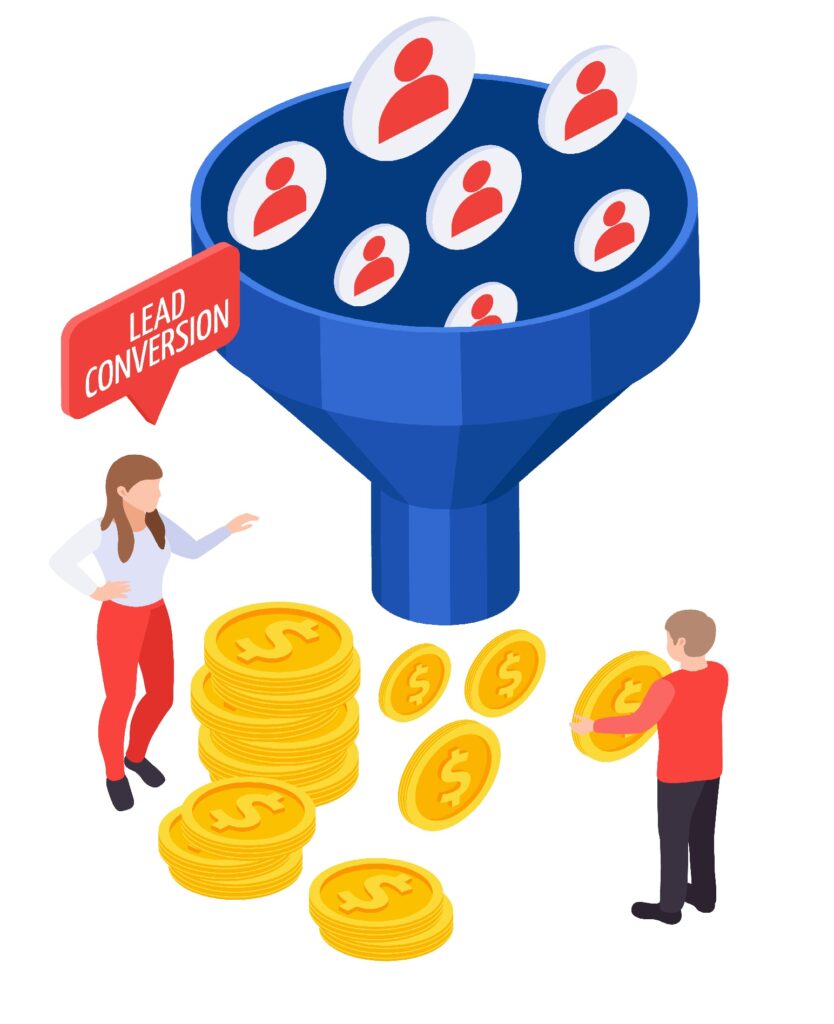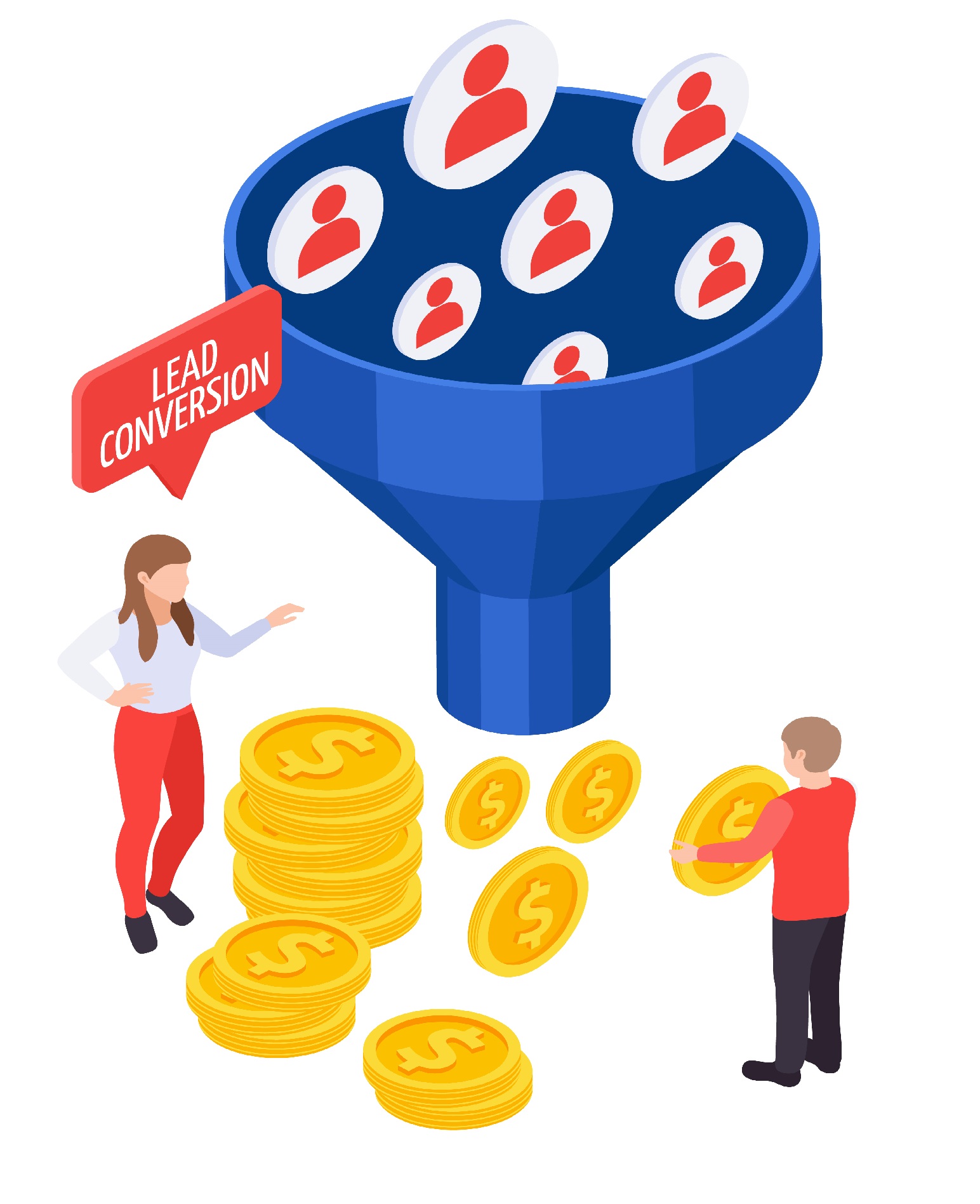In today’s highly competitive business landscape, generating leads that actually convert into customers is the holy grail of success. After all, what good are countless leads if they don’t translate into revenue? The ability to turn prospects into paying customers is the ultimate goal of any lead generation strategy, and that’s precisely what we’ll explore in this article. We’ll delve into the art and science of lead generation, uncovering the strategies that are proven to drive conversions.

Understanding the Landscape: What Are Leads That Convert?
Before we dive into the strategies for effective lead generation, let’s clarify what exactly we mean by “leads that convert.” A lead is typically a potential customer who has expressed interest in your product or service. However, not all leads are created equal. Some may just be casually interested, while others are highly motivated to make a purchase. Leads that convert are those that transition from initial interest to taking action, such as making a purchase or signing up for a service.
The key to effective lead generation is to identify, attract, and nurture these high-quality leads that are more likely to convert. By doing so, you can maximize your return on investment and boost your revenue.
1. Targeted Content Marketing
Content is king when it comes to lead generation. However, it’s not just about producing a lot of content. The focus should be on creating targeted and valuable content that resonates with your ideal audience. Here are some strategies to consider:
Buyer Personas: Develop detailed buyer personas to understand your target audience better. This helps you tailor your content to address their specific needs and pain points.
Content Mapping: Map out your content to align with the buyer’s journey. From awareness to consideration and decision stages, ensure that your content addresses their changing needs throughout the process.
Educational Content: Create informative content, such as blog posts, ebooks, webinars, and tutorials, that provides real value to your audience. The more you help them, the more likely they are to trust your expertise and convert.
2. Optimize for SEO
To attract leads that convert, your content needs to be easily discoverable by search engines. SEO (Search Engine Optimization) is crucial for this purpose. Make sure your website and content are optimized for relevant keywords. The key steps include:
Keyword Research: Identify the keywords and keyphrases that your target audience is searching for. Tools like Google Keyword Planner can be invaluable for this task.
On-Page SEO: Optimize your web pages by including relevant keywords in the title, meta description, headers, and content. Ensure your website is user-friendly and loads quickly.
High-Quality Backlinks: Building high-quality backlinks from authoritative websites can boost your SEO ranking, increasing your visibility in search engine results.
3. Utilize Social Media
In the digital age, social media is a powerful tool for lead generation. It allows you to engage with your audience on a more personal level. Here are some effective social media strategies:
Regular Posting: Maintain an active presence on social media platforms, sharing relevant content and updates regularly.
Paid Advertising: Consider using paid advertising on platforms like Facebook, Instagram, and LinkedIn. These ads can be highly targeted to reach specific demographics.
Engagement: Respond to comments and messages promptly, engage in conversations, and build a sense of community around your brand.
4. Email Marketing
Email marketing remains a potent tool for lead generation. Building a subscriber list and nurturing those leads through email can be highly effective. Here’s how to make it work for you:
Lead Magnets: Offer valuable content in exchange for email addresses. This could be a free ebook, a webinar, a discount, or a newsletter subscription.
Segmentation: Divide your email list into segments based on various criteria such as demographics, purchase history, or engagement level. This allows for more targeted and relevant email campaigns.
Drip Campaigns: Create automated drip email campaigns that guide leads through the buyer’s journey, providing them with the right information at the right time.
5. Landing Pages
Landing pages are specifically designed to convert visitors into leads. They should be simple, focused, and persuasive. Here are some key elements of effective landing pages:
Clear Call to Action (CTA): Make sure your CTA stands out and is compelling. Use action-oriented words like “Get Started” or “Sign Up Now.”
Minimal Distractions: Remove unnecessary elements that can distract visitors from the CTA. Keep the design clean and uncluttered.
Testimonials and Social Proof: Including testimonials, reviews, or trust badges can build credibility and trust, encouraging more conversions.
6. A/B Testing
A/B testing, or split testing, is a method of comparing two versions of a web page or marketing campaign to determine which one performs better. It’s a crucial element of lead generation, as it allows you to continually refine your strategies for optimal results. Areas to consider for A/B testing include:
CTA Buttons: Test variations in CTA button colors, text, and placement.
Headlines: Experiment with different headlines to see which ones resonate most with your audience.
Content Format: Try different content formats, such as videos, infographics, or long-form articles, to see what generates more leads.
7. Conversion Rate Optimization (CRO)
CRO is the process of fine-tuning your website and landing pages to increase the percentage of visitors who take the desired action, such as signing up or making a purchase. Consider the following CRO strategies:
Heatmaps and Analytics: Use tools to analyze how users interact with your site. Identify areas where visitors tend to drop off or lose interest.
User Experience (UX) Improvements: Ensure your website is user-friendly and easy to navigate. Minimize load times and eliminate any technical issues.
A/B Testing (Continued): As mentioned earlier, ongoing A/B testing is essential for optimizing conversion rates.
8. Follow-Up and Nurturing
Leads that convert often require nurturing. Not everyone will be ready to make a purchase immediately. Implement a lead nurturing strategy, which may include:
Lead Scoring: Assign scores to leads based on their interactions and engagement with your content. Focus more effort on higher-scoring leads.
Email Drip Campaigns: Continue to provide value through email and guide leads through the decision-making process.
Personalization: Tailor your communication to the individual needs and preferences of your leads.
9. Analyze and Iterate
Continuous improvement is vital in lead generation. Regularly analyze your efforts and results, and be prepared to make changes based on what you learn. Key performance indicators to track include:
Conversion Rate: Measure the percentage of leads that convert into customers.
Cost per Acquisition (CPA): Calculate how much you’re spending to acquire each customer.
Customer Lifetime Value (CLV): Understand the long-term value of a customer to your business.
Lead Source: Identify which channels and strategies are delivering the highest-quality leads.
10. Invest in Lead Generation Tools
Finally, consider investing in lead generation tools and software. These tools can automate and streamline many aspects of your lead generation efforts, making the process more efficient and effective. Some popular tools include:
Customer Relationship Management (CRM) software: To manage and organize leads and customer data.
Marketing Automation tools: To schedule and automate email campaigns and lead nurturing.
Analytics tools: To track and measure the performance of your lead generation efforts.
In conclusion, leads that convert are the lifeblood of any successful business. To generate these leads effectively, you need a well-thought-out strategy that incorporates content marketing, SEO, social media, email marketing, landing pages, A/B testing, conversion rate optimization, lead nurturing, and the continual analysis of results. By implementing these strategies, you can not only attract more leads but also increase the likelihood that they will convert into loyal customers, ultimately driving your business’s success.
Remember that lead generation is an ongoing process. It’s not about a single campaign but rather a comprehensive strategy that evolves and adapts to the changing needs and preferences of your target audience. So, invest time, resources, and effort into building a robust lead generation system that continually delivers leads that convert and fuels the growth of your business.
Related Articles:
1. 8 Effective Lead Conversion Strategies – VWO
2. 15 Effective Lead Generation Strategies (+ Best Practices)
3. Lead Generation Campaigns That Convert: Tips and …




